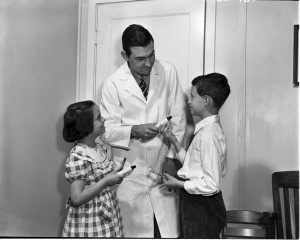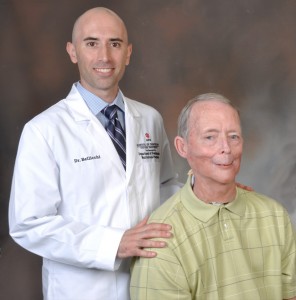
The Indiana University School of Dentistry is one of the oldest dental schools in the United States, starting in 1879 as the Indiana Dental College. Indiana University acquired it in 1925 and built a facility to house the school in 1933.
From its first days, the School of Dentistry has impacted the lives of people around the state and the world. Much of that impact comes from its thousands of living alumni who are pursuing their careers throughout the United States and almost 30 other countries.
The school also has impacted lives through the innovations discovered and developed by its personnel. These innovations are disclosed to the Indiana University Research and Technology Corporation, whose managers work with researchers to determine the best methods to protect the intellectual property and market it to industry.

Perhaps the best-known innovation developed at the School of Dentistry is the formula that became Crest® toothpaste. In 1950, Dr. Joseph C. Muhler headed a joint research project team formed by Procter & Gamble. When clinical studies of the new toothpaste with fluoride were conducted, they showed a 49 percent reduction in cavities in children ages six to 16. The reduction of tooth decay in adults was almost as high. Crest® was launched into test markets in 1955 and sold nationwide in 1956.
Another invention from the School of Dentistry that has reached the public is a formula to promote better oral care in dogs. Developed by Dr. George K. Stookey in 1991, the formula was licensed to pets products manufacturer Hartz®, which has branded it as DentaShield®. Its active ingredient reduces the formation of tartar by bonding with calcium in the dog’s saliva.
This culture of innovation established at the School of Dentistry remains strong today. Here are highlights from the 2015-2016 fiscal year:
- IURTC filed a patent application with the U.S. Patent and Trademark Office on an antibiotic paste. The paste aims to improve the outcomes of root canals by providing adequate anti-microbial protection while not killing stem cells that contribute to healing.
- IURTC licensed a technology that will enable users to detect certain bacterial infections. When users shine a light in the ultraviolet spectrum, the technology causes the bacteria to glow orange.
- Travis Bellicchi, a second-year maxillofacial prosthodontics resident, collaborated with Zeb Wood and Cade Jacobs in the School of Informatics and Computing to develop a process to fabricate artificial facial parts using 3-D printing. The first facial prosthesis was made for 68-year-old Shirley Anderson, who was left without a chin after the removal of his Adam’s apple and mandible.

Administrators and researchers in the School of Dentistry have created and cultivated an environment of innovation since it was acquired by Indiana University in 1925. That environment will be strengthened with a 45,000-square-foot, $21.6 million expansion to provide state-of-the-art clinics. New discoveries from the school’s researchers will be protected and marketed to industry. These new products and processes will improve people’s lives and expand the university’s impact throughout the world.
Leave a Reply